“It didn’t pass the ‘hippie in a pop-top VW camper at the border’ smell test.”
When the container ship MSC Gayane was busted in Philadelphia ten days ago carrying what ballooned into almost 20 tons of cocaine, it marked the fourth time an MSC Mediterranean Shipping Company vessel has been involved in a major drug bust… just since the beginning of the year.
The MSC Desiree was caught three months ago at the port in Baltimore, carrying a stash of cocaine worth $38 million
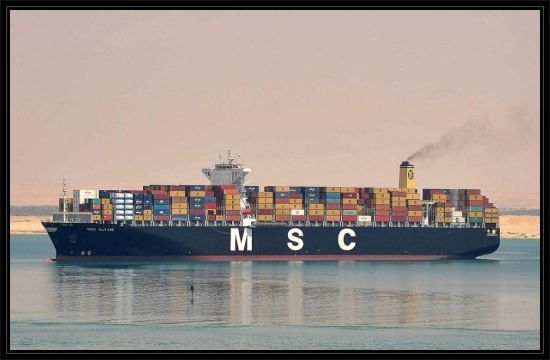 In February, almost 1.5 tons of cocaine was found in a container on another MSC cargo vessel, the MSC Carlotta, at the port of Newark.
In February, almost 1.5 tons of cocaine was found in a container on another MSC cargo vessel, the MSC Carlotta, at the port of Newark.
In April, 2.2 tons of cocaine was seized—again from the MSC Carlotta—in Callao, Peru.
That’s a big-time pirate fleet. Do you ever wonder what the government’s doing?
“Hey, I’m just the driver”
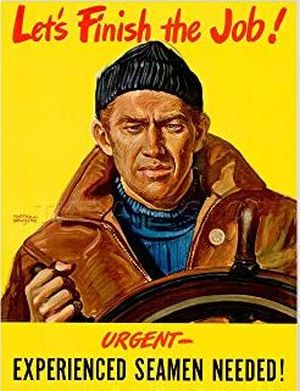 In the wake of the 20-ton drug bust in Philadelphia, US Customs and Border Protection (CBP) announced it was temporarily suspending MSC’s Customs Trade Partnership certification. US authorities would no longer assess the carrier as ‘low-risk.’ That is, temporarily.
In the wake of the 20-ton drug bust in Philadelphia, US Customs and Border Protection (CBP) announced it was temporarily suspending MSC’s Customs Trade Partnership certification. US authorities would no longer assess the carrier as ‘low-risk.’ That is, temporarily.
In the U.S. Government’s lack of response, the politics of the drug trade stood revealed.
It was darkness made visible.
Also, and not coincidentally, it didn’t pass the ‘hippie in a pop-top VW camper at the border’ smell test.
CONSIDER: If, after spending a margarita-soaked weekend in Tijuana, Customs agents found tons of cocaine crammed into nooks and crannies of an old VW pop-top camper you just happened to be driving, what would happen to you?
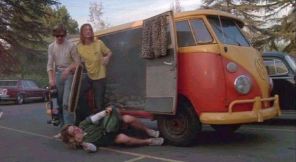 If you smiled your most ingratiating smile, and told the Customs Agent, “Hey buddy we’re basically on the same team!My bad, it wasn’t my fault, I’m just the driver!
If you smiled your most ingratiating smile, and told the Customs Agent, “Hey buddy we’re basically on the same team!My bad, it wasn’t my fault, I’m just the driver!
Take a look at this press release that the corporation that owns my VW van just issued!”
“MSC will continue to collaborate with authorities worldwide, to ensure our vessels are secure and can deliver our customers’ cargo safely and reliably.”
“MSC Mediterranean Shipping Company is aware of reports of an incident at the Port of Philadelphia in which U.S. authorities made a seizure of illicit cargo. MSC takes this matter very seriously and is grateful to the authorities for identifying any suspected abuse of its services.”
What do you think? Would Customs Agents grab the drugs, then hand you back you keys? Because that’s what just happened in Philly.
It was left to law enforcement officials to brazen it out.
Mis-underestimation all around
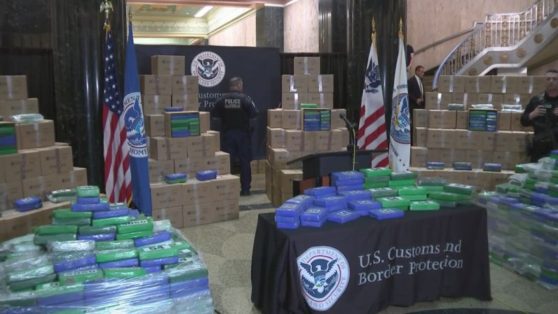
At a news conference announcing the historic 20-ton seizure, officials in Philadelphia were tap-dancing on the edge of an abyss.
“Thirty-five thousand pounds of cocaine is an incredible amount,” said Casey Durst, director of field operations for the regional office of U.S. Customs and Border Protection. “A street value of over a billion dollars is hard to conceptualize. Really, it’s just incredible.”
The assembled members of the press could have torn officials to shreds with nothing more than a raised eyebrow.
Luckily, they were relieved of that task. The Washington Post had already teamed up with the DEA to alert America to ‘What It All Means:’
“Traffickers are turning to East Coast seaports as a result of increased law enforcement pressure along the country’s southwest border.”
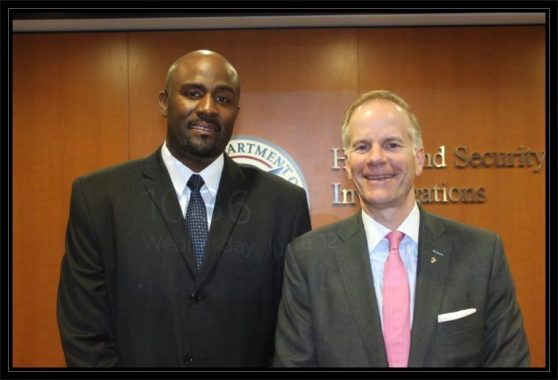 The U.S. Attorney for the Eastern District of Pennsylvania, William M. McSwain (doofus on right) delivered a blunt message to drug traffickers:
The U.S. Attorney for the Eastern District of Pennsylvania, William M. McSwain (doofus on right) delivered a blunt message to drug traffickers:
‘Don’t mess with Philly.’
“You thought you could breeze into our port and then leave with enough cocaine to destroy millions of lives without getting caught. You thought you were clever. You were wrong.”
“You underestimated the city, you underestimated our law enforcement capabilities and our commitment to decimating the illegal and immoral drug trade.”
It was mis-underestimation all around.
The gravity of carrying ‘heavy weight’
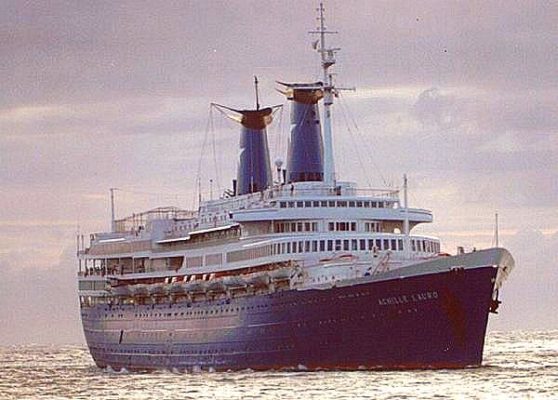 The gravity of the immense 20-ton seizure—second largest in American history—cannot be overstated.
The gravity of the immense 20-ton seizure—second largest in American history—cannot be overstated.
Learning that individuals involved in it were also been players in other signal events of our time came as no surprise.
 EXAMPLE: I reported last week: The owner of Mediterranean Shipping Company, whose corporate initials, M-S-C, form the prefix of the busted MSC Gayane; also the busted MSC Desiree. It is a private company, owned by a private party, who lives in Naples, Italy.
EXAMPLE: I reported last week: The owner of Mediterranean Shipping Company, whose corporate initials, M-S-C, form the prefix of the busted MSC Gayane; also the busted MSC Desiree. It is a private company, owned by a private party, who lives in Naples, Italy.
More: His name is Gianluigi Aponte. Back in 1985 he had owned the MS Achille Lauro cruise ship that was hijacked off the coast of Egypt by gunmen from the Palestine Liberation Organization. A 69-year-old Jewish-American man in a wheelchair, Leon Klinghoffer, was infamously murdered and thrown overboard.
French scandals: Small, but classy
 Aponte was also at the heart of a scandal last year which embroiled French President Emmanuel Macron’s chief of staff, Alexis Kohler, 45, described by the newspaper Le Monde as a member of the “trio that rules France.”
Aponte was also at the heart of a scandal last year which embroiled French President Emmanuel Macron’s chief of staff, Alexis Kohler, 45, described by the newspaper Le Monde as a member of the “trio that rules France.”
Kohler was accused of influence-peddling in cases involving the Mediterranean Shipping Company, which the New York Times described in the article as “an Italian-Swiss shipping and cruise firm.”
“Kohler was able to benefit from—MCS benefitted from—his influence to give it an edge when signing a contract, or to obtain contracts it otherwise might not have had,” said a lawyer for a French anti-corruption NGO.
The MSC investigation was an embarrassment for Macron, who had campaigned on a promise to run a squeaky-clean government to restore public trust in the French government, which has been eroded by a string of scandals in recent years.
“It’s a matter of urgent national security.’
 The mainstream media is awash in “alternative facts” concerning the owner of the busted container ship.
The mainstream media is awash in “alternative facts” concerning the owner of the busted container ship.
“Agents were still scanning containers aboard the Gayane, a cargo ship owned by MSC Mediterranean Shipping Co sailing under a Liberian flag. A Swiss-based shipping company, MSC is one of the world’s largest shipping lines in terms of containers, officials have said.”
“MSC Gayane is a cargo ship owned by Swiss firm MSC Mediterranean Shipping Co.,” reported the Washington Post.
“Federal authorities last week announced they had recovered over 35,000 pounds, or more than 15,800 kilograms, of cocaine from the Swiss-owned MSC Gayane.”
None of this is true.
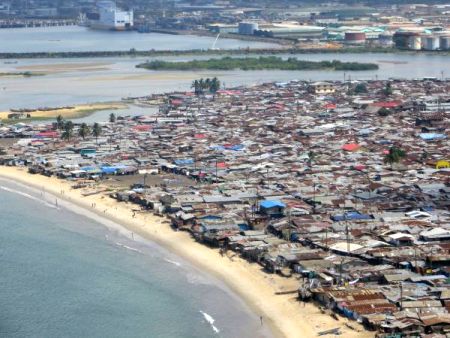 But then, if the government really wanted to know who owned the container ships importing what appears to be as many as 100 or more tons of cocaine a year, would they allow ships to sail across our borders that are registered in Liberia?
But then, if the government really wanted to know who owned the container ships importing what appears to be as many as 100 or more tons of cocaine a year, would they allow ships to sail across our borders that are registered in Liberia?
I reported last week: China’s HNA Group, the other multinational involved in the scandal, was the owner of both box cargo container vessels busted in Philadelphia.
So why are they lying?
Running interference for China’s HNA Group
According to Bloomberg, both busted container ships were owned by SinOceanic AS in Oslo, Norway, ‘which operates as a subsidiary of Sinindo Holdings, Ltd.’
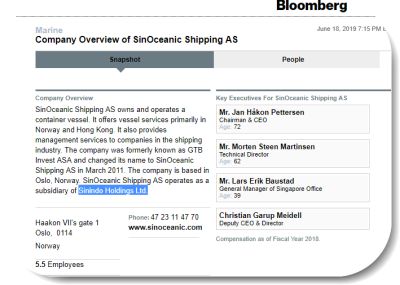 In turn, Sinindo Holdings Ltd, is based in Limassol, Cyprus—again according to Bloomberg— “where it operates as a subsidiary of HNA Group Limited.”
In turn, Sinindo Holdings Ltd, is based in Limassol, Cyprus—again according to Bloomberg— “where it operates as a subsidiary of HNA Group Limited.”
The two busted container ships are owned-and-or-operated by China’s HNA Group.
A prominent maritime industry observer agreed. Only he wasn’t aware that SinOceanic Shipping is owned by two further shell companies before disappearing back into China’s HNA Group.
“MSC is the second largest container ship operator in the world, but the company owns and operates very few ships,” he told me.
Forbes magazine reported two years ago, “For a company that’s regularly in the news, China’s HNA Group remains shrouded in mystery.”
To “shrouded in mystery,” add “protected by authorities.”
Tried and true CIA templates
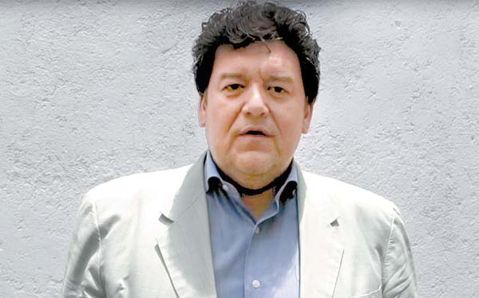 The drug trade operates on well-worn templates. If you’ve seen them in operation, they become easier to detect.
The drug trade operates on well-worn templates. If you’ve seen them in operation, they become easier to detect.
EXAMPLE: A 33-year old “Mexican entrepreneur” named Bernardo Dominguez Cereceres came out of nowhere in the late 1990’s to take a run at buying Westin Hotels for $700 million. Big mistake-o.
When the New York Times profiled him, he wilted.
“Education impresses Dominguez, perhaps over so,” read the snarky take-down. “His curriculum vitae lists a master’s degree in administration from the University of Pennsylvania, but there is no record of it there. When confronted, he said, “I didn’t even know that was on there.”
Asked about his resume, which also listed a master’s in finance from the London School of Economics, it was the same story.
“On the best business day of his life, as he kicked back in his suite in one of the 74 Westin Hotels he had just agreed to buy, Bernardo Dominguez punched a few numbers into a pay-per-view remote and settled back to watch the gangster movie “Carlito’s Way,” the profile continued.
You almost felt sorry for the guy. He was a torpedo, fronting for someone like Carlos Slim. My only interest in Dominguez was the fact he’d purchased a money-laundering vehicle first set up by CIA drug pilot Barry Seal.
The New York Times reporter, who spent several years covering Mexico from Mexico City, told me, “I had heard rumors that he (Dominguez) was involved in the drug trade, which was why so many people were bothered when he tried to take over the Westin hotel chain.”
He was recently accused by Spanish authorities of laundering money in spain for the family of the former Catalan president.
Bernardo Dominguez bought, during his spending spree in the late 1990’s, a private company that owned 15 airports in Mexico, including the one in Ciudad del Carmen where a DC-9 came down and was busted with 5.5 tons of cocaine.
Same shit, different date
 Guess who else has been purchasing airports, like they knew, more than any other corporation, that there was something of real intangible value in owning airports, especially in Latin America.
Guess who else has been purchasing airports, like they knew, more than any other corporation, that there was something of real intangible value in owning airports, especially in Latin America.
Even as it edged ever-closer to bankruptcy, China’s HNA Group—being protected for unknown reasons by the mainstream press in the U.S.—went out and bought the international airport in Rio de Janeiro.
“HNA Group is preparing a bid to operate Belgrade’s airport, after into Rio de Janeiro Airport, a company executive said, undeterred by Beijing’s sharpened scrutiny of overseas acquisitions.
 “Undeterred.” They must see some synergy there.
“Undeterred.” They must see some synergy there.
Both MSC and China’s HNA Group, which owns the vessels, both saw spectacular to phenomenal corporate growth year-in and year-out—even under abject economic circumstances—since the early 1990’s.
“From ‘new kid on block’ to big kid on waterfront”
“Despite a glut in global shipping capacity and low freight rates,” reported the Jan 26, 2003 Baltimore Sun, “MSC’s pace of growth is increasing, and it recently took delivery of 10 containerships that are among the biggest in the world.”
“It’s an incredible story. Just 30 years old, and the No. 2 liner in the world.”
A private company. A private individual. Spell it out for you?
MSC is a private company, owned by an anonymous and very private individual living in… Naples, Italy. Italian seafarers dominate Mediterranean Shipping Company’s officer ranks, as well as its executive offices, the paper reported.
“In the early years, they fought perceptions that their employer had connections to the Mafia, a rumor analysts say may have been linked to the company’s Italian roots, and tendency to keep financial details private.”
No doubt. More recently, there’s this:
“Mediterranean Shipping Company (MSC) responds to news that an Italian captain onboard it;s vessel ‘MSC Poh Lin’ has been arrested on suspicion of cocaine trafficking linked to the mafia.”
The official story leaves something to be desired
There is no easy way to say this. I don’t believe the story told in the criminal complaint. Not for a second. I indicated as much last week.
“According to the criminal complaint, Durasevic told authorities the cocaine was loaded onto the ship after leaving Peru. Tiasaga said six boats approached the MSC Gayane during the night,” I reported last week.
The affidavit alleged that crew members helped load the cocaine onto the MSC Gayane while it was at sea off the west coast of South America.
“Second Mate Durasevic operated the crane, swinging bag after bag of cocaine onboard. For numerous reasons to be explained later, I don’t believe that’s true.”
 My suspicions were confirmed when I encountered well-placed sources in a position to know on something called the “Old Salt Blog,” whose headline read “The Bizarre Smuggling Scheme on MSC Gayane.”
My suspicions were confirmed when I encountered well-placed sources in a position to know on something called the “Old Salt Blog,” whose headline read “The Bizarre Smuggling Scheme on MSC Gayane.”
“How the drugs came to be aboard the container ship is a bizarre and almost unbelievable story, involving the ship’s crew loading drugs at sea from more than two dozen small boats, operated by smugglers wearing ski masks,” reported Rick Spilman, a naval architect and maritime observer.
Yeah. That’s it.
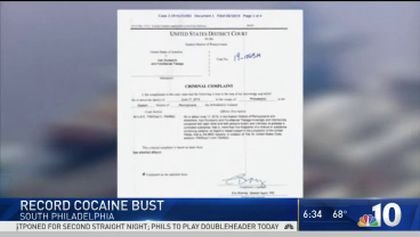 The Gayane’s crew brought the drugs aboard during rendezvous with small boats at sea, then concealed the narcotics in containers, according to the criminal complaint.
The Gayane’s crew brought the drugs aboard during rendezvous with small boats at sea, then concealed the narcotics in containers, according to the criminal complaint.
“Ivan Durasevic admitted his role to authorities in bringing cocaine onto the vessel after being offered $50,000 by the chief officer. Others assisted in loading the cocaine into containers. The whole process took approximately 30 to 40 minutes,” stated the criminal complaint.
“According to Durasevic, upon leaving Peru he got a call from the chief officer to come down to the deck, where he saw nets on the port side stern by the ship’s crane. Durasevic and four others, some wearing ski masks, pushed the nets, containing blue or black bags with handles, into two of the holds.”
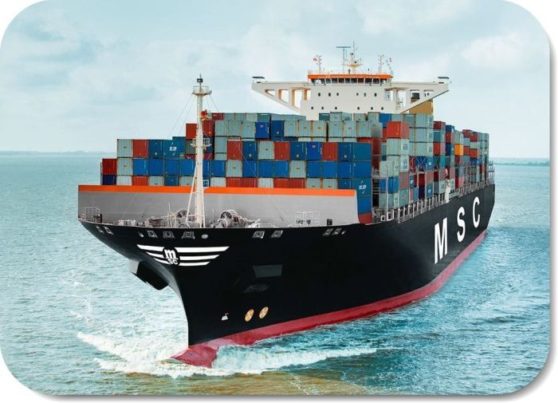 “What strains credulity is the notion that two or three of the ship’s crew, aided by four smugglers, hoisted and stowed 16 tons of drugs in less than an hour,” wrote ‘old salty dog’ Rick Spilman.
“What strains credulity is the notion that two or three of the ship’s crew, aided by four smugglers, hoisted and stowed 16 tons of drugs in less than an hour,” wrote ‘old salty dog’ Rick Spilman.
“Loading the drugs at sea from small boats seems to be far riskier and more dangerous than loading the drugs into a container sealed before being loaded onboard ship.”
“There is no way the ship’s captain could not have known at some point that the vessel ‘was stopped at sea,” commented one observer.
“If the captain knew, then the ship’s operator knew as well. The bridge’s telegraph keeps a written log of all engine room transactions, reviewed in real-time by the company operating the ship.”
Shave and a haircut using Occam’s razor
 “Occam’s Razor dictates that 16-30 tons of cargo was not transferred at sea but was transferred as part of routine onloading in port. Logic also dictates that the operator was complicit.”
“Occam’s Razor dictates that 16-30 tons of cargo was not transferred at sea but was transferred as part of routine onloading in port. Logic also dictates that the operator was complicit.”
“It’s a simple case. The crew received a prepared story in case they got caught, normal procedure for drug cartels and their mules.”
“All and all, not so bizarre,’ except to the uninitiated,” wrote another observer. “The crew are lying, and in lying to protect their superiors from sanction, their families get paid while they take the heat and do time.”
“This is a systemic trafficking operation.”
“Most goods smuggled by container are loaded onshore. The larger question is: why were the drugs delivered at sea?”
They weren’t.
The infamous port of Buenaventura
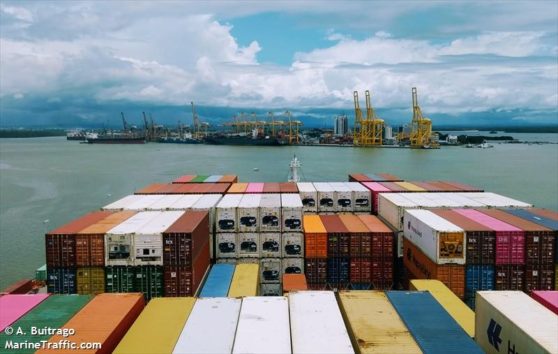 Why lie? The answer is hidden in sleight-of-hand and misdirection in original reporting of the itinerary of the container shipwhich. Barely mentioned is the name of the Colombian port where the cocaine was likely loaded onto the container ship.
Why lie? The answer is hidden in sleight-of-hand and misdirection in original reporting of the itinerary of the container shipwhich. Barely mentioned is the name of the Colombian port where the cocaine was likely loaded onto the container ship.
Sometimes it’s not what they say. It’s what they don’t.
The word rarely mentioned in press coverage was “Buenaventura,” the port in northwestern Colombia where most of that nation’s cocaine is loaded for delivery around the world.
“Federal authorities say Colombia is the primary supplier of cocaine to the U.S.,” the Associated Press reported. “Before coming to Philadelphia, the Mediterranean Shipping Company ship was previously in the Bahamas, Panama, Peru and Colombia. The ship was on its way to the Netherlands.”
Was there a deliberate attempt to avoid mentioning the port of preference for government-sanctioned drug trafficking in recent years?
La Esmeralda didn’t have an owner either
Here’s an example I remember coviering at the time:
“In October 2007, 23 tons of cocaine—the biggest load of cocaine ever discovered on a ship—was loaded into the hold of a refrigerated cargo ship at Buenaventura, Colombia.”
Thhat’s one of the MSC Gayane’s regular ports of call. And, wonder of wonders, China’s HNA GROUP was looking to invest in infrastructure there.
 Days later Mexican marines made a surprise raid in the port of Manzanillo, storming the refrigerated container ship La Esmeralda, which had sailed from Buenaventura Colombia to Manzanillo in the Pacific coast state of Colima.
Days later Mexican marines made a surprise raid in the port of Manzanillo, storming the refrigerated container ship La Esmeralda, which had sailed from Buenaventura Colombia to Manzanillo in the Pacific coast state of Colima.
“Big cocaine haul on ship flying HK flag” read the headline from the South China Morning Post.
“The cocaine was packed in containers inside the Hong Kong-flagged Esmeralda, which arrived in Manzanillo from the Colombian Pacific port of Buenaventura,” wire services reported.
There was blanket press coverage of what eventually totaled out at 26 tons of cocaine in the container ship bust in Mexico. The Mexican government called it the largest drug seizure in the country’s history.
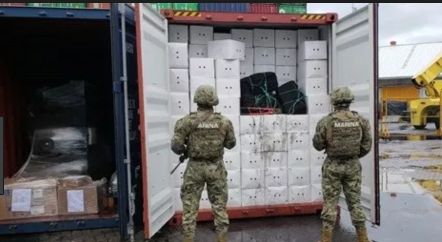 But there was something curious. There were pictures of offloaded containers filled with cocaine stacked on the Manzanillo docks being watched over by soldiers from the Mexican military.
But there was something curious. There were pictures of offloaded containers filled with cocaine stacked on the Manzanillo docks being watched over by soldiers from the Mexican military.
But there were no pictures of Mexican marines unloading the cocaine from the ship. In fact, there were no pictures of the ship.
Before alerting the media to the huge cocaine bust, Mexican authorities allowed the ship to proceed on its way.
As it happened, the ownership of the cargo ship Esmeralda was as closely-guarded a secret as the names of the American owners of the two American drug-running airplanes from St. Petersburg.
How to skate on a 23-ton cocaine beef
Press reports agreed the Esmeralda was registered in Hong Kong.
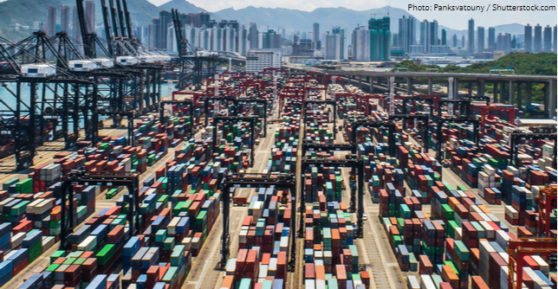 “A Hong Kong-flagged ship was found carrying at least 26 tons of cocaine by Mexican authorities in what is believed to be one of the nation’s biggest drug busts,” reported the Associated Press.
“A Hong Kong-flagged ship was found carrying at least 26 tons of cocaine by Mexican authorities in what is believed to be one of the nation’s biggest drug busts,” reported the Associated Press.
All I needed do to learn the true owner of the ship, I told myself excitedly, was call the Hong Kong maritime authority.
“All Hong Kong ships must register with us,” a Hong Kong department spokesman told me. “But the identity of the ship which departed from Buenaventura, Colombia remains a mystery to the Hong Kong Marine Department. We did not find its registration.”
“Maybe it was flying the Hong Kong flag to conceal its real identity.”
It was a pretty impressive piece of business.
Whoever owned La Esmeralda had skated on a 23-ton coke beef.
“Gonna get sub-atomic on your ass”
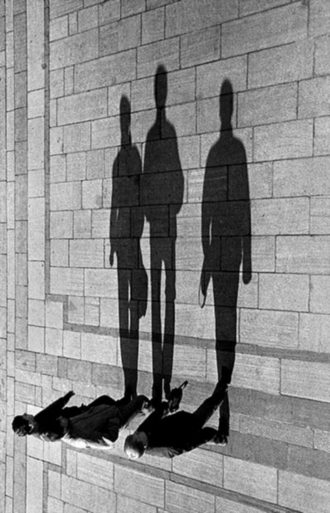 It was another example of Heisenberg’s Ownership Uncertainty Principle, as applied to the movements of large ships, container vessels, and commercial and business jets which get busted carrying narcotics.
It was another example of Heisenberg’s Ownership Uncertainty Principle, as applied to the movements of large ships, container vessels, and commercial and business jets which get busted carrying narcotics.
Mankind’s knowledge about who owns them fluctuates—like the movement of subatomic quarks— rising and falling with the level of influence the ship or plane’s owner can exert.
Prospects are deemed especially poor in cases associated with national political figures in the country whose vessel has been interdicted.
The whole business, suggests a story from the Associated Press, quickly moves beyond the realm of human ken.
“How the U.S.-registered Gulfstream (a 3.6 ton bust) ended up in the hands of suspected drug traffickers remains a mystery,” the AP reported.
Reporting the Esmeralda 26-ton story in 2007, I wrote, “The really important question is: Who owned the ship?”
Since then, nothing has changed.
24-hour Buenaventura news channel
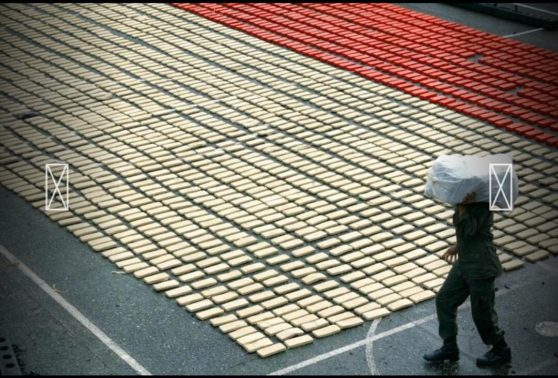 In February 2000, the US Coast Guard seized six tons of cocaine on a ship intercepted in international waters in the Pacific Ocean after it set sail from Colombia’s main Pacific coast port of Buenaventura.”
In February 2000, the US Coast Guard seized six tons of cocaine on a ship intercepted in international waters in the Pacific Ocean after it set sail from Colombia’s main Pacific coast port of Buenaventura.”
Months later, on July 13, the Associated Press reported “A smuggling ring dubbed ‘Los Niches’ shipped cocaine through the port of Buenaventura. “
“The biggest fish landed was former Medellin cartel jefe Fabio Ochoa, in a sweep against a drug gang suspected of shipping as much as 30 tons of cocaine monthly to the U.S. through the port.
Dutch police found more than 2 tons of cocaine—the largest in Europe to that time—hidden in barrels of fruit juice shipped from the port of Buenaventura to Amsterdam.
U.S. Customs officials targeted the container ship Bahia at the port of Newark because it had last called on the port of Buenaventura on Colombia’s west coast, not far from the cocaine suppliers of Cali.
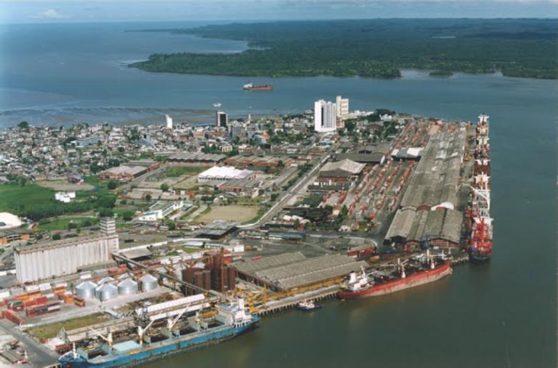 According to officials, most of the narcotics shipped through ports—an estimated 50 metric tons—is hidden in containerized cargo.
According to officials, most of the narcotics shipped through ports—an estimated 50 metric tons—is hidden in containerized cargo.
The port of Manzanillo was for several years the battleground in an all-out three-way war between the Sinaloa, Juarez, and Beltran Leyva cartels.
All three had strong links with Colombia’s Norte del Valle cartel. The 26 tons of cocaine seized in Manzanillo on the La Esmeralda had been shipped from Buenaventura by the Norte del Valle Cartel to the Sinaloa cartel.
And the beat goes on.
The picture at the top of this story is a rendering of an opium stacking room in India. The opium was, as always, being shipped to China. Today China is returning the favor.

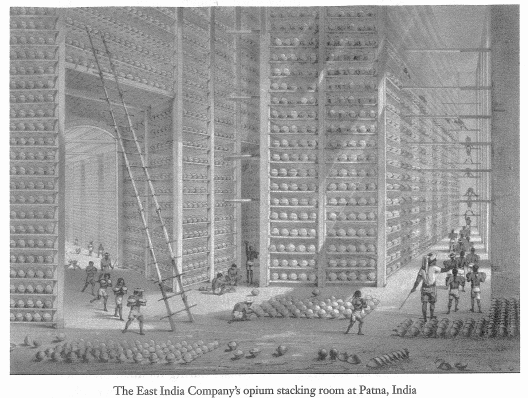
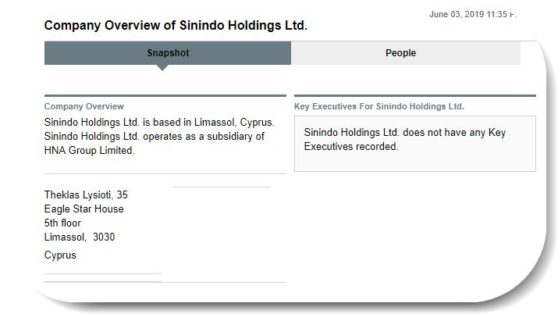
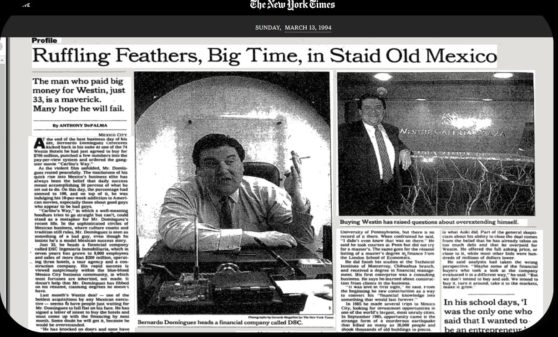

Yes, loading 20 tonnes at sea might be quite problematic, not only by logistics and this is about a volume filling up two twentyfooters to the top. Many names with Balcan origin sounds to me we have the russian-serbian mafia here, since years established in Perú. http://caretas.pe/politica/87147-circuito_serbio_de_olazabal These big dispatches are always organized by the big boys like CIA and other competitive security services like FSB, in cooperation with narcos. These drugs will now end up in the US streets instead of Europe as a kind of hijacked pirate goods IMHO.
This business can only be kept rolling if someone at the maximum retail end is willing to do $5 dollar deals all night long.
Trade Partnership certification, I wonder how many entities that JPM owns have Trade Partnership certification?
MSC is a private owned shipping company as ARE Maersk, largest container shipping Company in the World, or CGM-CMA, etc. Not a sin to be privately owned. Fact is that MR Aponte, owner of MSC is fm Sorrento but lives in Geneva since more than 45 years. MSC was founded in 1974.
This said I work in the shipping business and crewmembers story is unrealistic.
Although a ship could be anchored at sea waiting their turn to berth. An operation of aproaching ship and transferring 20 tons of drugs would take hours and you would need an army of men to mové the bricks of cocaine. These vessel carry aprox 20 crew. If every on board was involved, means each crew member would have to mové /carry on board 1 ton of cocaine.
Further, if they hid it on containers on board, and broke /changed the ctnr seals to hide the cocaine in them, ctnrs with different seal number would of been automatically revised/scanned at port of destinación. So how did they expect to take control of the cocaine at destinatión?
Too many loop-holes in the crew members story.
Great article. I have to add that those ships were owned by SinOceanic, which was owned by HNA (China).
I found search engine results with description saying JP Morgan Maritime bought those drug carrying ships in 2018, but it wouldn’t link to the article.
Registered Owner SinOceanic XII
https://www.vesselfinder.com/vessels/MSC-DESIREE-IMO-9745665-MMSI-255805868
MSC Gayenne Registered Owner is InOceanic
http://www.seatrade-maritime.com/news/europe/sinoceanic-faces-refinancing-deadline.html
SinOceanic XII Registered in Bermuda
https://www.gov.bm/50370/sinoceanic-xii-limited-stewart-gordon-smith-50370
7/2018 HNA Group Chairman Sudden Death
http://archive.li/l7TuB
It’s a tangled web of relationships and deals. How can it be sorted out?
Glad to see you’re posting again.
Overall, I’ve found your articles to be informative. But, this is the internet, and the readers are left wondering where this all leads to.
Not that I’d like to see you meet the same fate as Gary Webb or Danny Casolaro.
Hell, we the Serfs have to trust the vote counters, and Stalin loved the counters. Lol
I found your website on Ryan Dawsons’. I’m new to this type of news. Thanks. No one I shared a lamens’ note on this with was surprised. We live on the east coast of Florida. Stuff washes up on occassion. I shared your website. I hope you don’t get into trouble, and fair well.